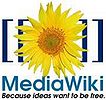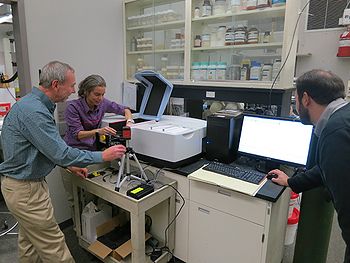Difference between revisions of "MainPage:Nuclear"
Jump to navigation
Jump to search
| Line 77: | Line 77: | ||
# Precision Measurements of Pion and Kaon Form Factors and Structure Functions. | # Precision Measurements of Pion and Kaon Form Factors and Structure Functions. | ||
::*Form factors are the most basic quantity towards understanding light hadron structure. The structure functions in terms of sea quarks and gluons are expected to be different for pions, kaons, and nucleons and to provide basic information about their origin of mass. | ::*Form factors are the most basic quantity towards understanding light hadron structure. The structure functions in terms of sea quarks and gluons are expected to be different for pions, kaons, and nucleons and to provide basic information about their origin of mass. | ||
| − | |||
# Validation of understanding of hard exclusive and semi-inclusive reactions towards 3D hadron imaging and potential future flavor decomposition. | # Validation of understanding of hard exclusive and semi-inclusive reactions towards 3D hadron imaging and potential future flavor decomposition. | ||
::* The key to this validation is precision longitudinal-transverse separated data. | ::* The key to this validation is precision longitudinal-transverse separated data. | ||
Revision as of 11:14, 4 October 2019
The CUA NP group
Quick links to our experiments, data analysis, and instrumentation:
- Kaon LT Experiment Redmine page.
- EIC Global Studies page.
- Neutral Particle Spectrometer project page.
- Compact Photon Source project page.
- Kaon Aerogel Detector page.
- Neutral Particle Spectrometer - calorimeter page.
Visit our Secure Wiki at JLab for more information.
Latest News
|
Upcoming events
|
Projects Pages
SCIENCE GOALS
- Precision Measurements of Pion and Kaon Form Factors and Structure Functions.
- Form factors are the most basic quantity towards understanding light hadron structure. The structure functions in terms of sea quarks and gluons are expected to be different for pions, kaons, and nucleons and to provide basic information about their origin of mass.
- Validation of understanding of hard exclusive and semi-inclusive reactions towards 3D hadron imaging and potential future flavor decomposition.
- The key to this validation is precision longitudinal-transverse separated data.
NEAR TERM: Pion and Kaon L/T separated cross sections and form factors from Jefferson Lab
- 12 GeV experiments
- Charged pions at 12 GeV JLab (Experiment E12-19-006) (Contact: T. Horn, M. Muhoza PhD project)
- Charged kaons at 12 GeV JLab (Experiment E12-09-011) (Contact: T. Horn, R. Trotta PhD project)
- Analysis of neutral pion cross sections from 12 GeV DVCS data (S. Ali PhD project)
- Detector Projects
- Analysis of 6 GeV data
INTERMEDIATE TERM: Reaction mechanism validation and hadron imaging with NPS and CPS
- Collaboration and NPS Construction
- Neutral Particle Spectrometer Collaboration (spokesperson: T. Horn): Hadron Structure Studies with Neutral Final States
- Neutral Particle Spectrometer Project (spokesperson: T. Horn)
- NPS ERR 2019
- Compact Photon Source (spokesperson: T. Horn) - required for experiments E12-17-008 and C12-18-005)
- NPS Science Program:
-
- Exclusive Deeply Virtual Compton and Neutral Pion Cross Section Measurements in Hall C (Experiment E12-13-010)
- Measurements of Semi-inclusive pi0 production as Validation of Factorization (Experiment E12-13-007)
- Wide-angle Compton Scattering at 8 and 10 GeV Photon Energies (Experiment E12-14-003)
- Wide-angle Exclusive Photoproduction of pi0 mesons (Experiment E12-14-005)
- Polarization Observables in Wide-Angle Compton Scattering at large s, t and u (Experiment E12-17-008)
- https://misportal.jlab.org/mis/physics/experiments/viewProposal.cfm?paperId=947 (Experiment C12-18-005)
-
FUTURE: Electron-Ion Collider - Science and Detector R&D
- EIC science developement
- Pion and Kaon Structure Functions
- Pion and kaon production kinematic projections
- Pion form factor
- EIC Detector R&D
- Homogeneous EM Calorimeter Development for EIC, p. 14ff
- Development of novel glass scintillators for homogeneous calorimeters
- Development of high quality aerogels with refractive index <1.01 for nuclear and high energy physics
Meetings
Members of the Group
|
Alumni of the Group
|
Summer Student Researchers
|
Other internal links
To see the last updates of the entire wiki, click here.
|
External links
 The Catholic University of America (CUA) |
 CUA Physics Department |
 Jefferson Lab (JLab) |
|
 Yerevan Group logbook |
 Learn more about wiki commands! |
Acknowledgement!
Thanks a lot for:
- Nick and Rich and also the VSL group for giving us a space to host our wiki!
- Dr. Marek Brandys and Dr. Ian Pegg, from VSL group
- All the people (from several Universities, Institutes and also JLab) that are collaborating to make these projects happen!
The Catholic University of America * 620 Michigan Ave., N.E. * Washington, DC 20064 Hannan Hall - Office 200
